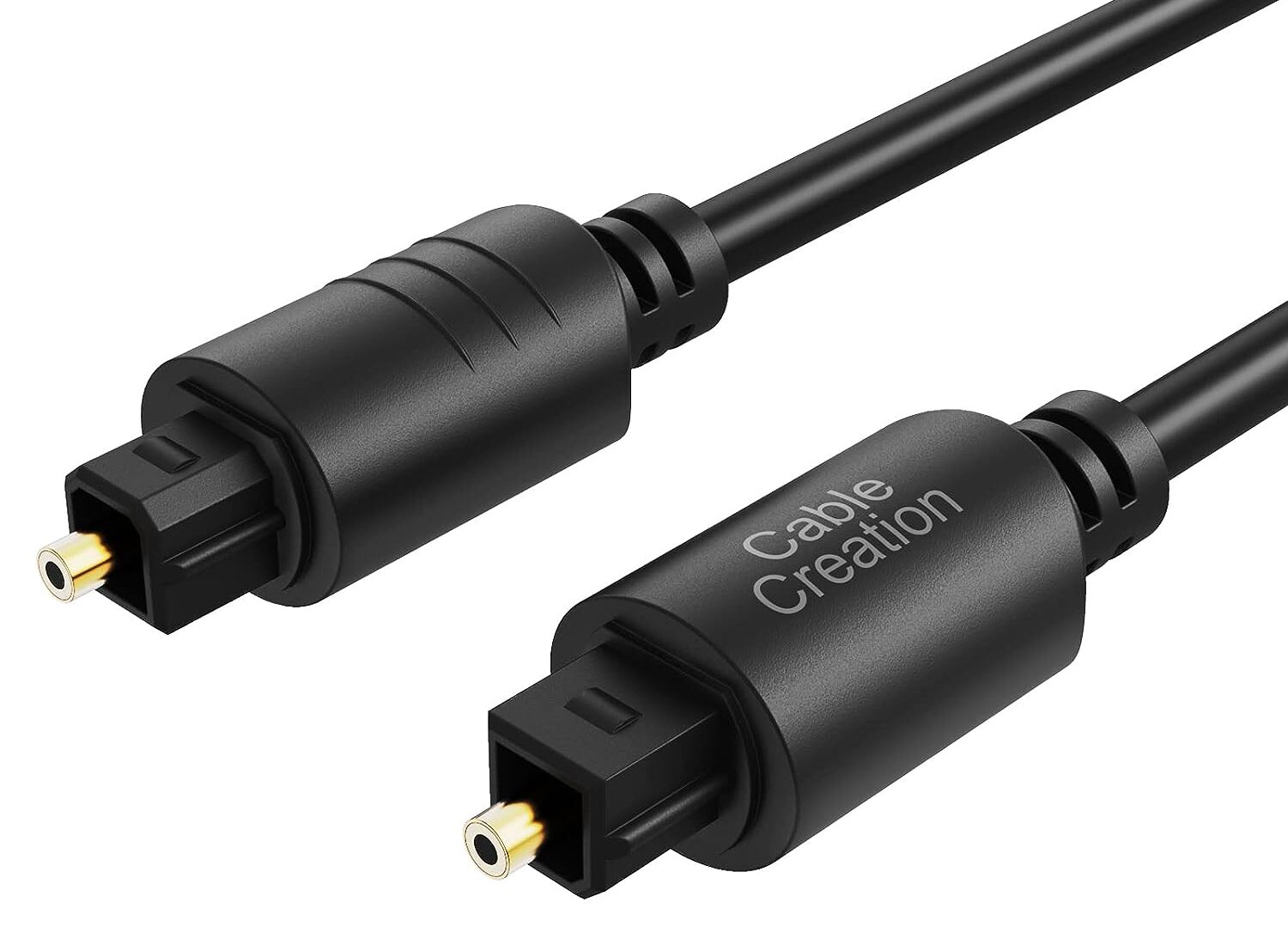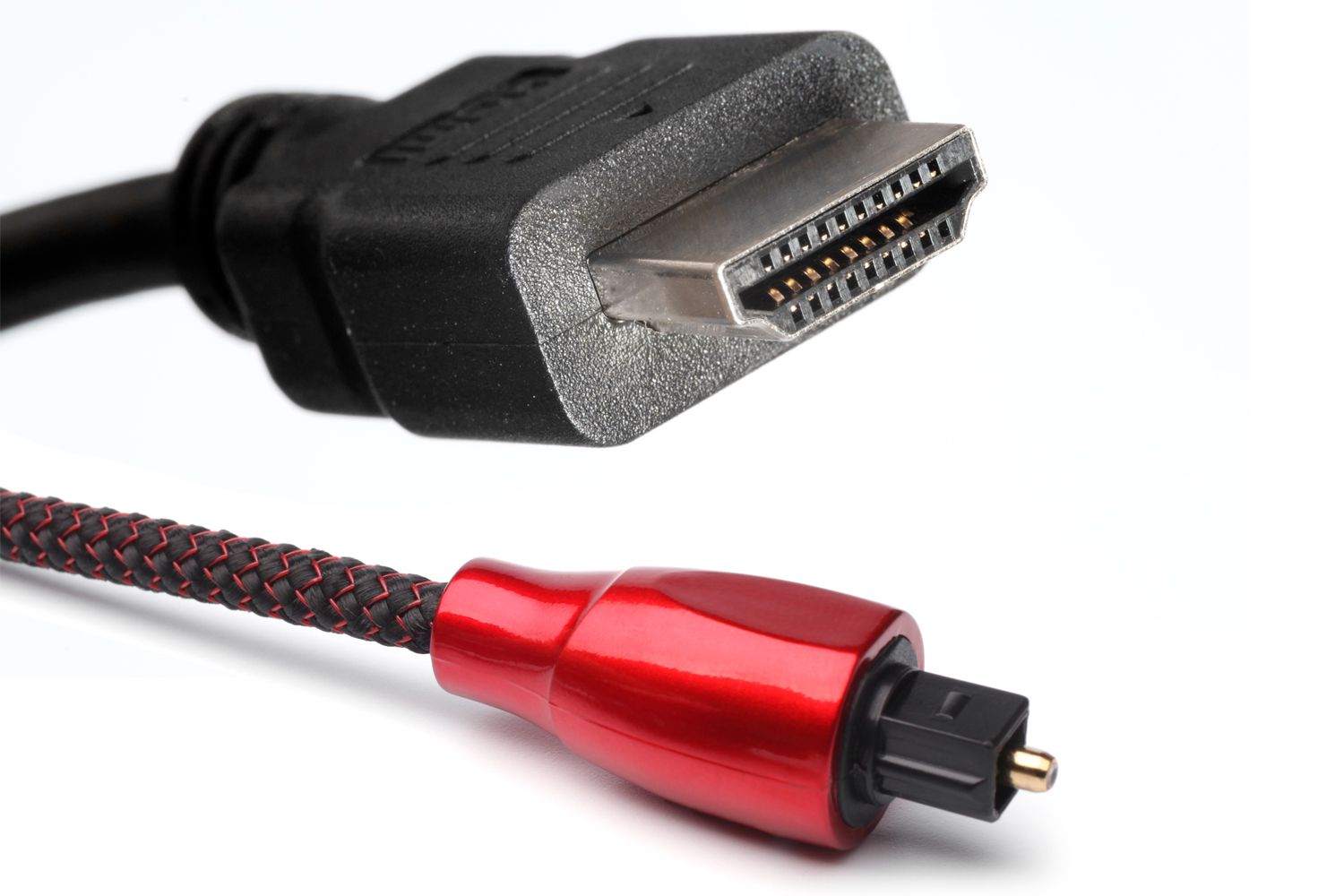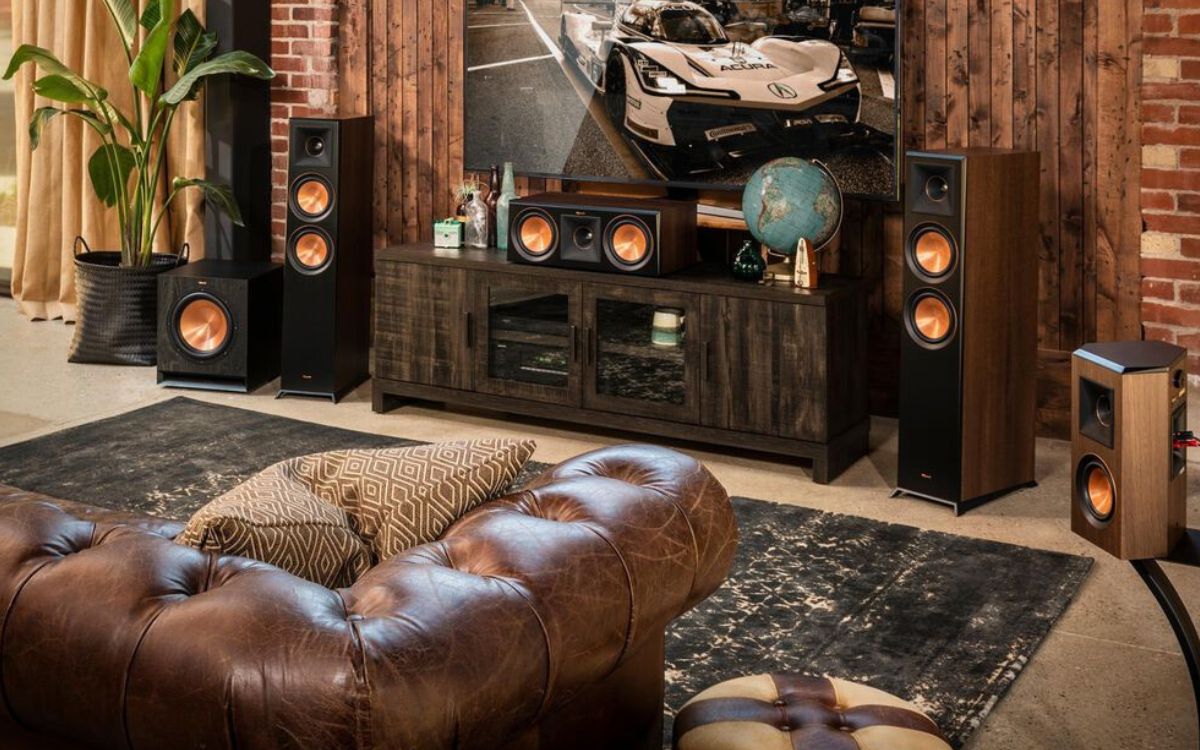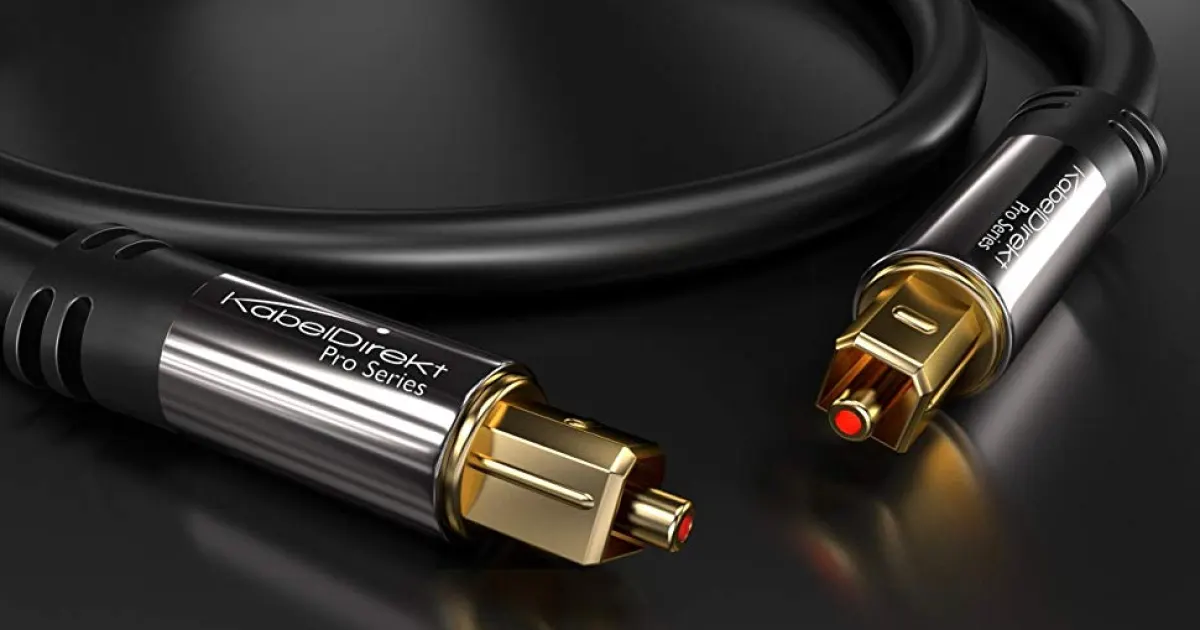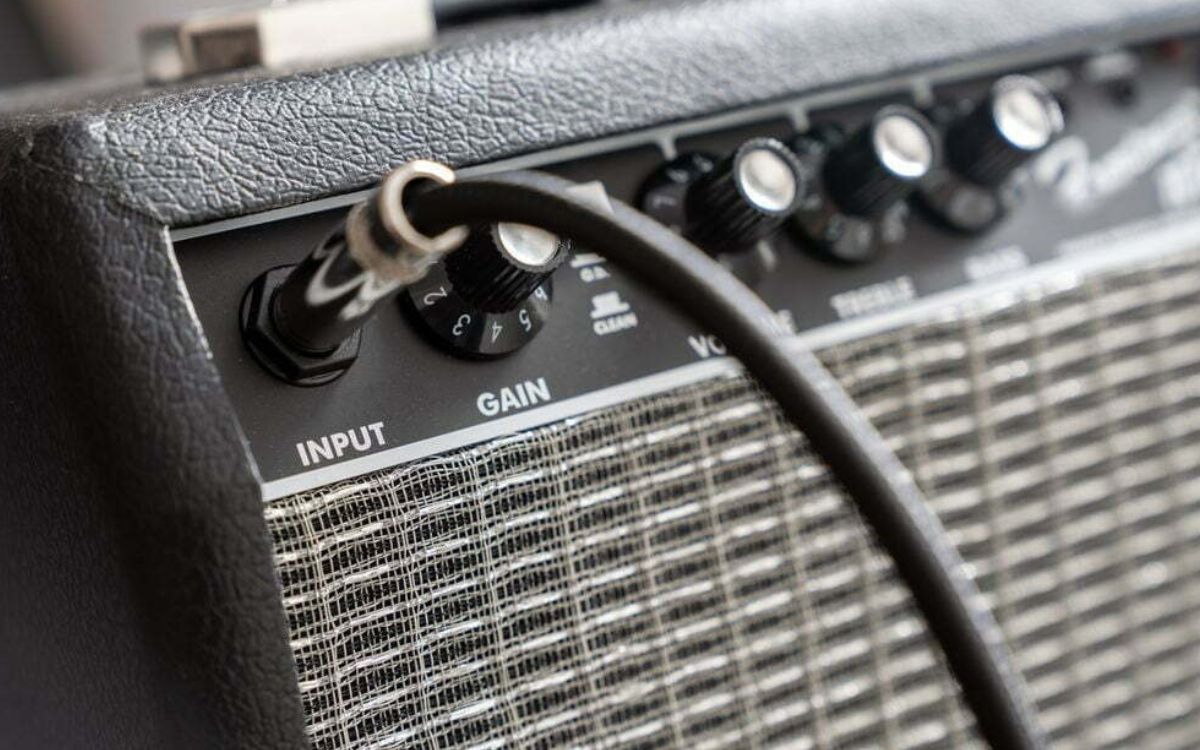Home>Production & Technology>Surround Sound>What Does An Optical Cable Do For Surround Sound


Surround Sound
What Does An Optical Cable Do For Surround Sound
Modified: January 22, 2024
Discover the benefits of using an optical cable for surround sound. Enhance your audio experience with crisp and immersive sound quality.
(Many of the links in this article redirect to a specific reviewed product. Your purchase of these products through affiliate links helps to generate commission for AudioLover.com, at no extra cost. Learn more)
Table of Contents
Introduction
When it comes to achieving the ultimate surround sound experience, having the right audio setup is essential. One of the key components that can significantly enhance your audio quality is an optical cable. In this article, we will explore what an optical cable is, how it works, and the benefits it offers for surround sound systems.
An optical cable, also known as a digital audio cable or TOSLINK cable, is a specialized cable designed to transmit high-quality digital audio signals between audio devices. It is widely used in home theater systems, soundbars, gaming consoles, and other audio equipment that require superior audio performance.
The primary function of an optical cable is to transmit digital audio data in the form of light pulses using fiber optic technology. Unlike traditional analog cables, which transmit audio signals as electrical currents, optical cables deliver pure digital signals without any loss or interference. This results in enhanced audio quality and a more immersive surround sound experience.
Optical cables are typically equipped with Toslink connectors, which are square-shaped plugs that securely connect to the corresponding optical ports on audio devices. These connectors ensure a reliable and stable connection, minimizing any audio disruptions or signal loss.
So, how does an optical cable work? Let’s explore the inner workings of this audio marvel in the next section.
What Is an Optical Cable?
An optical cable, also known as a digital audio cable or TOSLINK cable, is a specialized cable designed to transmit high-quality digital audio signals between audio devices. It is widely used in home theater systems, soundbars, gaming consoles, and other audio equipment that require superior audio performance.
Unlike traditional analog cables, which transmit audio signals as electrical currents, optical cables utilize advanced fiber optic technology to transmit digital audio data in the form of light pulses. These light pulses travel through the optical fiber core of the cable, ensuring a clean and pristine audio signal without any loss or interference.
The optical cable consists of a core, cladding, and a protective outer layer. The core is a thin, transparent glass or plastic strand through which the light signals travel. The cladding, a layer surrounding the core, has a lower refractive index, which helps to confine the light within the core and prevent loss of signal strength.
On each end of the optical cable, there are connectors, commonly known as Toslink connectors, that securely plug into the corresponding optical ports on audio devices. These connectors are designed to ensure a reliable and secure connection, minimizing any signal disruptions or loss.
Optical cables support various audio formats, including stereo, Dolby Digital, DTS, and PCM (pulse-code modulation), making them versatile and compatible with a wide range of audio devices. They can transmit high-resolution audio signals up to 24-bit/192kHz, allowing you to experience every detail and nuance of your favorite movies, music, and games.
In addition to their audio capabilities, optical cables are also capable of transmitting certain control signals, such as turning on/off the connected devices or adjusting the volume. This allows you to have more control over your audio system without needing separate control cables.
Now that we have a basic understanding of what an optical cable is, let’s dive deeper into how it works and the benefits it offers for surround sound systems.
How Does an Optical Cable Work?
An optical cable works by utilizing fiber optic technology to transmit digital audio signals in the form of light pulses. Unlike traditional analog cables that rely on electrical currents, optical cables ensure a cleaner and more accurate audio signal transmission. Let’s take a closer look at how it works.
Inside an optical cable, there is a core made of either a thin glass or plastic strand. This core is surrounded by a cladding layer, which has a lower refractive index than the core. This difference in refractive index helps keep the light signals confined within the core, preventing signal loss and maintaining the integrity of the audio data.
At each end of the optical cable, there are Toslink connectors. These connectors plug into the corresponding optical ports on audio devices, creating a secure and reliable connection. The Toslink connectors ensure that the light pulses are transmitted accurately, with minimal loss or interference.
When audio data is sent through an optical cable, it is first converted into a digital signal by the audio device. This digital signal is then encoded as a series of light pulses, representing the ones and zeros of the audio data. These light pulses travel through the core of the optical cable, bouncing off the walls due to the total internal reflection caused by the cladding layer. This bouncing effect, known as the “fiber optic effect,” allows the light pulses to travel long distances without any significant loss in signal quality.
Once the light pulses reach the receiving end of the optical cable, they are converted back into an electrical signal by the audio device. This electrical signal is then decoded, allowing you to hear the audio in all its digital glory. This conversion process happens seamlessly and quickly, ensuring that there is no noticeable delay or loss of audio quality.
One of the key advantages of using an optical cable is its immunity to electromagnetic interference (EMI) and radio frequency interference (RFI). Unlike analog cables that can be susceptible to interference from other electronic devices, optical cables transmit audio signals using light, which is immune to these types of interferences. This results in a cleaner, distortion-free audio signal, allowing you to enjoy your surround sound system to the fullest.
In the next section, we will explore the benefits of using an optical cable for surround sound systems.
Benefits of Using an Optical Cable for Surround Sound
Using an optical cable for your surround sound system offers a range of benefits that can greatly enhance your audio experience. Let’s explore some of the key advantages of utilizing an optical cable:
Improved Audio Quality: One of the primary reasons to use an optical cable for surround sound is the significantly improved audio quality it provides. Optical cables transmit digital audio signals in their purest form, without any loss or interference. This means you can enjoy crystal-clear sound reproduction with precise detail and accurate imaging, immersing yourself in a truly immersive audio experience.
Reduced Interference: Unlike analog cables that can be susceptible to electromagnetic interference (EMI) and radio frequency interference (RFI), optical cables are immune to these interferences. The transmission of audio signals through light pulses ensures that there is no degradation in quality or distortion caused by external factors. This results in a clean and pristine audio signal, free from unwanted noise or interruptions.
Easy Connection and Setup: Optical cables are simple to use and connect. The Toslink connectors on the cables are designed to fit securely into the corresponding optical ports on your audio devices. This eliminates the need for complex wiring setups and ensures a hassle-free installation process. Simply plug in the optical cable, and you’re ready to enjoy high-quality surround sound.
Compatibility with Various Devices: Optical cables are highly versatile and compatible with a wide range of audio devices. Whether you have a home theater system, soundbar, gaming console, or Blu-ray player, chances are it has an optical audio port. This means you can seamlessly connect your surround sound system to these devices using an optical cable, without worrying about compatibility issues.
Long Distance Transmission: Fiber optic technology used in optical cables allows for long-distance transmission without loss of signal quality. You can position your audio devices far away from each other without compromising audio performance. This flexibility in placement ensures that you can design your surround sound setup according to your preferences and room layout.
Simplified Control: Optical cables not only transmit audio signals but also certain control signals. This means you can use a single cable to control functions like turning on/off your audio devices, adjusting volume levels, or switching between audio sources. This simplifies the control of your surround sound system, making it more convenient and user-friendly.
Overall, using an optical cable for your surround sound system provides numerous advantages, including superior audio quality, reduced interference, easy setup, compatibility, long-distance transmission, and simplified control. By harnessing the power of fiber optic technology, you can elevate your audio experience to new heights and immerse yourself in a truly cinematic soundstage.
Improved Audio Quality
One of the significant benefits of using an optical cable for surround sound is the improved audio quality it delivers. Unlike analog cables, which can introduce noise and interference, optical cables transmit digital audio signals in their purest form. This results in a cleaner, more accurate representation of the original audio source, allowing you to experience audio in its truest form.
With an optical cable, you can enjoy enhanced audio clarity and precision. The digital transmission eliminates the potential for signal degradation or loss commonly associated with analog cables, ensuring that every detail, from subtle whispers to thundering explosions, is faithfully reproduced. This improved accuracy and precision contribute to a more immersive and engaging audio experience.
Furthermore, optical cables support high-quality audio formats, including Dolby Digital, DTS, and PCM. These formats are often used in movies, music, and gaming, providing multichannel surround sound and high-fidelity audio. By utilizing an optical cable, you can fully unleash the potential of these audio formats and immerse yourself in a rich and dynamic soundstage.
Another advantage of optical cables is their ability to transmit high-resolution audio. These cables can handle audio signals with a resolution of up to 24-bit/192kHz, allowing you to experience studio-quality sound in the comfort of your own home. Whether you’re listening to music, watching movies, or playing games, the improved audio resolution provided by an optical cable can make a noticeable difference.
Additionally, optical cables offer low signal distortion, thanks to their immunity to electromagnetic interference (EMI) and radio frequency interference (RFI). Unlike analog cables, which can pick up electrical noise from nearby electronic devices, optical cables remain unaffected by external interference. This leads to cleaner and more accurate audio reproduction, free from unwanted buzzing or hissing sounds.
The improved audio quality provided by an optical cable is particularly noticeable in surround sound systems. Surround sound relies on precise audio positioning to create an immersive 3D audio experience. With the accurate transmission and reproduction capabilities of optical cables, you can fully appreciate the directional audio effects and immersive soundscapes that surround sound systems offer.
Ultimately, the improved audio quality achieved with an optical cable elevates your listening experience to new heights. Whether you’re a music enthusiast, a movie lover, or a dedicated gamer, the enhanced clarity, accuracy, and fidelity of the audio signal transmitted through an optical cable can truly immerse you in the captivating world of sound.
Reduced Interference
One of the significant benefits of using an optical cable for surround sound is the reduced interference it offers. Unlike analog cables, which can be susceptible to electromagnetic interference (EMI) and radio frequency interference (RFI), optical cables provide a cleaner and more reliable audio transmission.
EMI and RFI are common interferences that can degrade audio quality and introduce unwanted noise or distortion into the audio signal. EMI is caused by electromagnetic fields generated by electronic devices or power sources, while RFI is interference from radio frequency signals. These interferences can result in a loss of signal strength, audible hums, buzzing sounds, or static.
Optical cables, on the other hand, are immune to EMI and RFI. Since they operate by transmitting digital audio signals as light pulses, they are not affected by electromagnetic or radio frequency disturbances. This means that you can enjoy a clean and uninterrupted audio signal, free from the interference that could degrade your listening experience.
The immunity of optical cables to interference is particularly beneficial in environments where multiple electronic devices are present. In such scenarios, other cables, such as analog cables, can pick up EMI and RFI generated by nearby devices, resulting in compromised audio quality. However, by utilizing an optical cable, you can ensure that your surround sound system remains unaffected by external interferences, allowing you to fully enjoy the pristine audio reproduction.
Reduced interference also has a significant impact on audio accuracy and detail. With analog cables, the presence of interference can introduce noise or distortion into the audio signal, obscuring subtle nuances and diminishing the overall clarity. In contrast, the clean transmission of digital audio signals through optical cables preserves the integrity of the audio data, providing accurate and unblemished reproduction of every note, sound effect, and dialogue.
Furthermore, the reduced interference offered by optical cables results in a more dynamic and immersive audio experience. By eliminating potential distortion or noise, you can fully appreciate the full range of sound, from the softest whisper to the loudest explosion. This ensures that you don’t miss out on any crucial audio details, creating a more engaging and realistic surround sound experience.
In summary, the use of an optical cable for your surround sound system significantly reduces interference from EMI and RFI, resulting in a cleaner and more accurate audio transmission. By eliminating external disturbances, you can enjoy a more immersive listening experience, with enhanced clarity, detail, and fidelity in the audio reproduction.
Easy Connection and Setup
One of the major advantages of using an optical cable for surround sound is the ease of connection and setup it offers. Whether you’re a tech-savvy enthusiast or a beginner in audio systems, setting up and connecting an optical cable is straightforward and hassle-free.
Optical cables feature Toslink connectors, which are specifically designed to fit securely into the corresponding optical ports on your audio devices. These connectors are plug-and-play, meaning you simply insert the connector into the optical port, and the connection is made. This eliminates the need for complicated wiring configurations or special adapters, making the setup process quick and effortless.
In addition to the ease of physical connection, the use of optical cables eliminates the need for manual speaker calibration. Unlike some analog cables that require meticulous fine-tuning of volume levels and speaker distances, optical cables transmit the audio signal digitally, allowing the audio device or receiver to handle the proper distribution and calibration automatically. This simplifies the setup process and ensures optimal sound performance without the need for complex adjustments.
Another advantage of using optical cables is their compatibility with a wide range of audio devices. Whether you have a home theater system, soundbar, gaming console, Blu-ray player, or any other audio equipment with an optical audio port, you can easily connect and integrate these devices into your surround sound system with an optical cable. This versatility eliminates compatibility concerns and allows you to enjoy immersive audio across multiple devices.
Furthermore, optical cables support various audio formats, including Dolby Digital, DTS, and PCM. This compatibility ensures that you can enjoy surround sound and high-quality audio regardless of the format of your audio source. Whether it’s a Blu-ray movie, a streaming service, a video game, or a music album, the optical cable’s easy connection and setup enable you to experience immersive audio without any complications.
The simplicity of the setup process also extends to the maintenance of your surround sound system. If you need to disconnect or move your audio devices, optical cables allow for hassle-free disconnection and reconnection. The secure and snug fit of the Toslink connectors ensures a reliable connection each time, minimizing the risk of accidental disconnections or signal loss.
In summary, the easy connection and setup provided by optical cables make them a convenient choice for your surround sound system. With simple plug-and-play connectivity, compatibility with various devices, and automatic calibration, you can quickly integrate your audio equipment and start enjoying immersive, high-quality sound without any technical headaches.
Compatibility with Various Devices
One of the key advantages of using an optical cable for surround sound is its compatibility with a wide range of audio devices. Optical cables can seamlessly connect and integrate with various devices, making them a versatile choice for your audio setup.
Whether you have a home theater system, soundbar, gaming console, Blu-ray player, or any other audio equipment with an optical audio port, you can easily connect it to your surround sound system using an optical cable. This compatibility ensures that you can enjoy immersive audio across multiple devices without any hassle or complications.
The widespread adoption of optical audio ports in modern audio devices makes it easy to find compatible devices for your surround sound system. Most audio devices today, including TVs, receivers, and audio processors, come equipped with optical audio ports, making them ready to connect with an optical cable.
Optical cables are also commonly used in gaming consoles, such as PlayStation and Xbox. This means that you can easily integrate your gaming console into your surround sound system, enhancing your gaming experience with immersive audio effects and high-quality sound reproduction.
In addition to gaming consoles, optical cables are widely supported by Blu-ray players. Blu-ray discs often come with high-definition audio formats, such as Dolby TrueHD and DTS-HD Master Audio. By connecting your Blu-ray player to your surround sound system using an optical cable, you can enjoy these advanced audio formats to their full potential.
Soundbars are another popular audio device that are compatible with optical cables. With their compact and sleek design, soundbars are an excellent choice for enhancing the audio quality of your TV. By connecting a soundbar to your TV using an optical cable, you can achieve a more immersive sound experience without the need for a complex speaker setup.
Furthermore, optical cables are compatible with streaming devices, such as media players or smart TVs. Many streaming services, like Netflix or Amazon Prime, offer content with surround sound capabilities. By connecting your streaming device to your surround sound system using an optical cable, you can enjoy immersive and cinematic audio while streaming your favorite movies or TV shows.
Overall, the compatibility of optical cables with a wide range of audio devices allows you to seamlessly integrate and connect your surround sound system. Whether you’re watching a movie, playing a game, or streaming content, the ability to connect various devices using an optical cable ensures that you can enjoy immersive and high-quality audio across multiple platforms.
Conclusion
In conclusion, using an optical cable for surround sound systems offers numerous benefits that significantly enhance your audio experience. Optical cables, also known as digital audio cables or TOSLINK cables, transmit digital audio signals in their purest form, resulting in improved audio quality and a more immersive soundstage.
With an optical cable, you can enjoy enhanced audio clarity, precision, and fidelity. The digital transmission technology ensures that there is no loss or interference, allowing you to experience every detail and nuance of your favorite movies, music, and games. The high-resolution audio formats supported by optical cables further elevate the audio experience, providing studio-quality sound reproduction.
Moreover, optical cables offer reduced interference by being immune to electromagnetic interference (EMI) and radio frequency interference (RFI). This ensures a clean and distortion-free audio signal, free from external noise or disruptions. The reduced interference also contributes to a more dynamic and immersive audio experience, allowing you to fully appreciate the directional audio effects of surround sound systems.
The ease of connection and setup of optical cables is another advantage. With Toslink connectors and plug-and-play functionality, connecting your audio devices is straightforward and hassle-free. The compatibility of optical cables with various devices, including home theater systems, soundbars, gaming consoles, and Blu-ray players, allows you to create a seamless and integrated audio setup.
In summary, optical cables offer improved audio quality, reduced interference, easy connection and setup, and compatibility with a wide range of devices. By harnessing the power of fiber optic technology, you can elevate your surround sound experience and immerse yourself in a captivating audio environment.
So, whether you’re a movie enthusiast, a music lover, or a dedicated gamer, consider incorporating an optical cable into your surround sound system. With its enhanced audio performance and user-friendly features, you can transform your entertainment space into a true audio haven.


